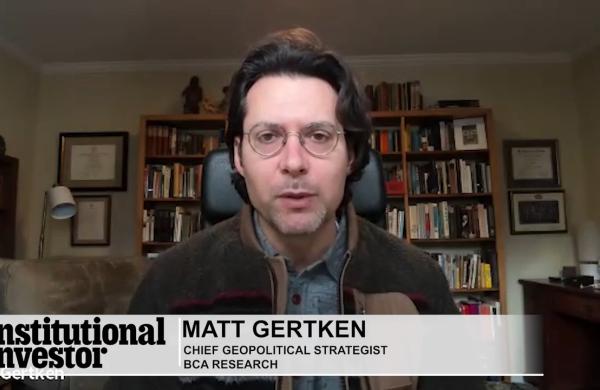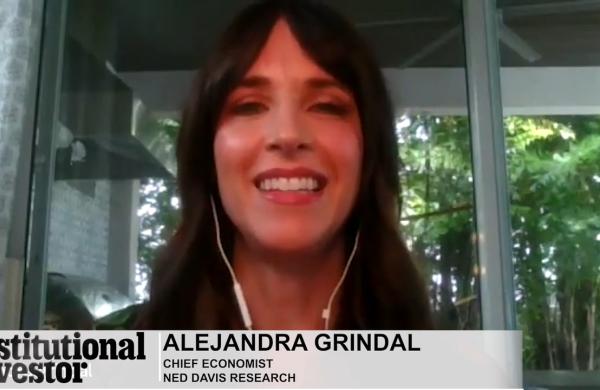Last July the Securities Industry Association tried to light a fire under its membership to put the U.S. on a T+1 - trade date plus one - settlement cycle by 2004.
By Tom Groenfeldt
July 2001
Institutional Investor Magazine
Last July the Securities Industry Association tried to light a fire under its membership to put the U.S. on a T+1 - trade date plus one - settlement cycle by 2004. Sure, it would be expensive: Broker-dealers, asset managers, custodians and infrastructure providers would have to shell out $8 billion, the trade group estimated with the help of consultants from Accenture and Capco. But the future net pretax benefits - new back-office efficiencies, less exposure to transaction failures, improved liquidity - would add up to $2.7 billion a year.
The numbers seem no less abstract today than they did a year ago, but the SIA's aggressive timetable for achieving T+1 requires so much preparation, cooperation and coordination among the participants that some executives are already sweating about the deadline. Three months after the report came out, concerned SIA executive vice president Donald Kittell said: "This is the biggest change in clearing and settlement in 25 years. It reminds me of Y2K, but we're pushing uphill."
There is a lot at stake. Aside from efficiency gains, the SIA sees T+1 as a way to reassert U.S. capital markets' dominance as cross-border trading takes off and as multinational stock exchanges such as Euronext improve clearing mechanisms. Most foreign markets are no faster, and some are several days slower, than the current U.S. standard, T+3.
The technology community, not surprisingly, sees an opportunity: The projected $8 billion for T+1 is $2 billion more than the securities industry spent on Y2K upgrades and $7 billion more than the cost of implementing decimal stock pricing. "To say T+1 is more complicated than Y2K or decimalization is one of the great understatements," says Merrill Lynch & Co. executive Arthur Thomas, chairman of the SIA T+1 steering committee.
"This is an industry with old back-office systems," points out Thomas Shaw of IBM Corp.'s global financial markets group. "To drive costs down, provide good service to customers and get better at risk management, companies have to do something about their core engines. Otherwise it's not worth the effort" - or the big bucks required to get it done.
The potential payout aside, technologists also crave the challenge. Though the two-day differential is the same, the shift from T+3 to T+1 is far more complicated than was the reduction from T+5 to T+3 in the mid-1990s. T+3 was just an acceleration of existing processes. T+1 amounts to radical reengineering; it requires broad acceptance of straight-through processing, which means moving the bulk of transactions from order entry to final settlement without human intervention. Back-office exceptions, errors, faxes and phone calls - and the people making them - will have to go away. And the industry will have to create new entities, called matching utilities, to impose order on several steps in the late stages of trade executions.
Prominent technology vendors such as Compaq Computer Corp., IBM, Microsoft Corp. and SunGard Data Systems have been quick to take up the challenge. As investment firms and their custodian banks size up their options, vendors are partnering to tackle the bigger tasks; some are also slicing very complex problems into smaller parts to address highly specific STP needs.
"Going to T+1 - and the conventional wisdom says that T+0 will follow shortly after that - you need new systems, and firms are going to be faced with major architectural changes," says William Hartnett, global director of financial services at Microsoft.
Microsoft recently helped cast a high-profile vote of confidence in this business proposition: the formation of Encompys, a joint venture with consulting giant Accenture, investment management technology leader Advent Software, Bank of New York and Compaq to usher asset management firms into STP and T+1. "It was important that all of these players came together," says Thomas Renyi, chairman and CEO of BoNY, the biggest global custodian. "Each of us brings specialized capabilities. None of us alone can do all that needs to be done."
When the group unveiled Encompys in April, it had already lined up George Trumbull, the retired CEO of Australian financial services giant AMP, as chief executive. And Pacific Investment Management Co. had signed on as the first client. Trumbull stresses that asset managers will need so much hand-holding that even Encompys won't be able to do everything. "Customers are also going to need help from firms such as IBM and PricewaterhouseCoopers," he says. "We can help them implement our solution; we aren't staffed to help them change [internal] processes."
Encompys acts as an application service provider, or outsourcer. Asset managers can leave the technical complications to Encompys, paying per-transaction fees rather than making a sizable up-front capital investment. That should be especially attractive to fund managers, which have been slower than brokerages to modernize their trading systems and will likely need to spend more, proportionally, to get up to speed. According to the SIA study, U.S. asset managers would have to spend $1.7 billion to get to T+1 by 2004. That's 21 percent of the $8 billion industry bill, but the return on that investment, an estimated $403 million a year, amounts to only 15 percent of the projected $2.7 billion payback.
Pimco, a subsidiary of German insurer Allianz, makes a distinction between critical activities related to its $220 billion in assets under management and functions such as backroom processing and clearing that require expert attention but can be left to others, explains Pimco chief information officer Robert Ettl. "For nonstrategic technology, we find the best partner we can and provide our intellectual knowledge and capital to help them develop a platform that makes sense for us and that they could resell," he says.
There is flexibility in these relationships. Even though Pimco relies on Encompys for STP, it will remain with a BoNY competitor, State Street Corp., for custodial services. Encompys didn't force the issue; its customers demand that neutrality.
IBM dubs its contrasting approach STP Workbench. While Encompys is focusing on second-tier and smaller asset managers, figuring that the largest will opt to build their own systems, IBM is aiming at both top- and second-tier brokerages, fund managers and custodians, says Shaw, director of the Workbench program. The Workbench framework, announced in May, includes consulting, systems integration services and various IBM products. Though not going the joint venture route, IBM has opened its system to operate with applications from other software developers, including Financial Fusion, SmartStream Technologies, SunGard and Wilco International.
Recognizing that clients will choose different strategies and move at varying speeds, Shaw says that Workbench is "'architected' so that they can build this over a period of time and prioritize the changes they want." The upgrade gives multinational institutions an opportunity to consolidate systems that lack consistency from country to country. "STP is a global enterprise issue for customers, so we had to come up with a full answer," says Shaw.
Encompys's Trumbull, not surprisingly, sees multicountry rationalization as an opening for outsourcing. Once firms make that move, he says, they will find it easier to enter new markets.
There will be still other service alternatives. J.P. Morgan Chase & Co., No. 2 in global custody behind BoNY, is tailoring its own solutions. The bank plans to make substantial technology investments but has not yet decided if it will operate like Encompys, as an application service provider.
"This is an important area for us to expand and continue as a top provider to investment managers globally," says Paula Sausville-Arthus, head of J.P. Morgan's recently formed asset manager solutions group. "That's not to say that each and every custodian will see this as the right path for them." Perhaps, but all face the need to make choices. Given the complexity of the project, inaction is not an option.





